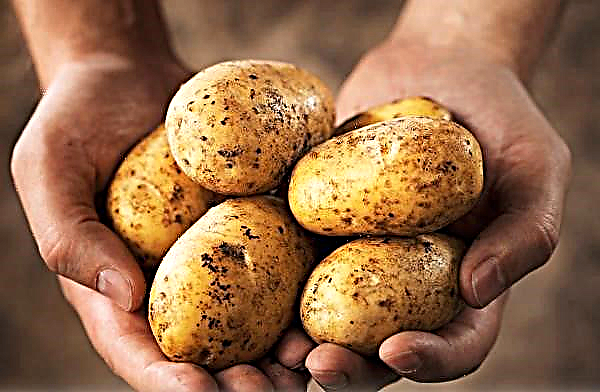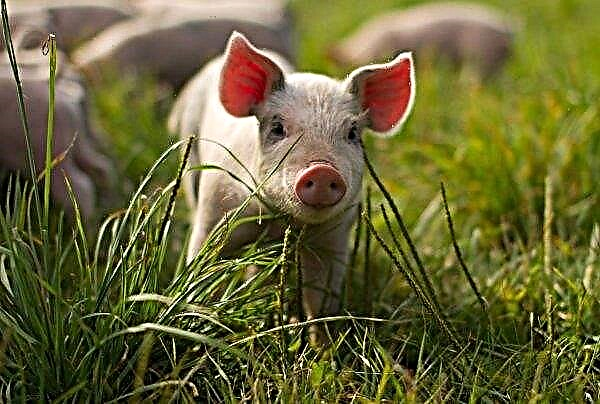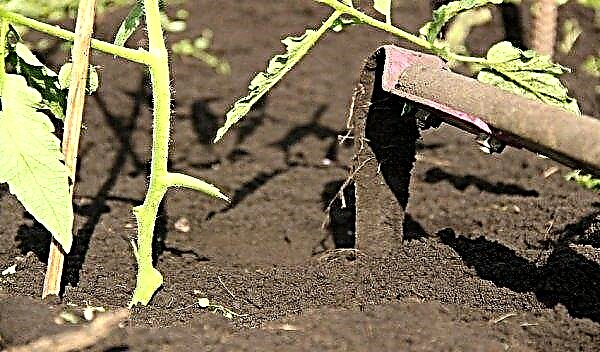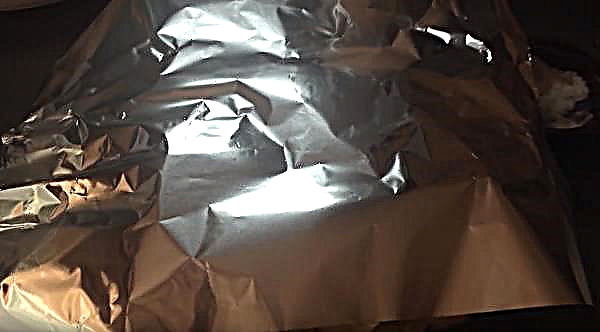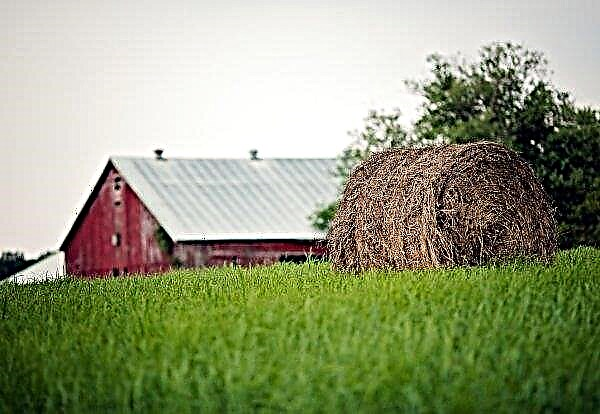Insects, like all living organisms, can be affected by both bacterial diseases and various pests, which increases the risk of premature death of the bee family. To preserve the health of bees, there is such a device as a heat chamber.
What is a heat chamber
Most novice beekeepers, at first, do not realize that bee families can be affected by any parasites, and they need to be destroyed quickly. The thermal chamber is a large-sized drawer, similar to a miniature gas stove without burners.
It has glass inserts to monitor the heat treatment procedure, as well as a special cavity that must be heated and ventilated. The camera works using electrical energy.

Varieties of heat chambers
To date, there are three generations of heat chambers that are constantly improved to achieve better results. There are cameras with a flat cartridge - they have significant advantages over standard ones.
Important! Heat treatment of bees will increase their resistance to fungal diseases and reduce the risk of viral infections.
The first-generation heat chamber - Crunch's camera.
This is a primitive camera, consisting of:
- cases with viewing windows and slots for hands;
- pest removal networks;
- thermometer and heater;
- cassettes and funnels.

The disadvantage of the thermal chamber is that the bees from the tick are processed for 25 minutes, and the optimal time for heat treatment is 15 minutes. This happens because the cartridge is heated at two levels: before loading and after laying the cartridge. After the first heating cycle, the temperature in the chamber drops by about 15 ° C due to the placement of a cold cassette with bees in the device.
Prolonged exposure to high temperatures has a negative effect on bees; a sufficient number of melliferous insects die. The cassettes are oriented at 1.5 kg of insects and the bees are overheating due to the lack of vented notches and holes.
Important! It is imperative to observe the temperature regime of the chamber, because even the slightest deviation from the norm will lead to negative results.
2nd generation heat chamber
This is a camera with a rotating cassette, which has the ability to move in circular or jerky movements. Thanks to this camera, there is no longer any need to shake the cassette. The disadvantage remains the same, the heat treatment time is 20-25 minutes.
The second drawback is that the temperature changes during processing, and different temperatures in different places of the chamber. In the center and above it is warmer, in the corners and below it is colder.
There is also a third drawback - the danger from varroa ticks remains, because after falling of the parasites due to processing, they do not fall on the grid, but affect other bees - such a problem in the design of the heat chamber is associated with the continuous movement of the cassette. When the tick is attached for the second time, it will not fall off the bee, as a result, heat treatment loses its relevance.
3rd generation heat chamber
A device with a heated air stream. The disadvantage of this camera is significant. The cassette is cylindrical in shape, stationary (not movable), the bee flows are in a crowded state at the bottom of the cassette when there is a shift towards air flow. In this regard, it is difficult to completely get rid of pests.
Flat cassette heat chamber
This is the most ideal option of all existing, it has practically no negative qualities, and the processing efficiency reaches 100%. The body is made of a single-wall cylinder, the temperature difference in the sections of this device is not more than 0.1 ° C. The cassette consists of a mesh cylinder, the bees scatter there with a funnel, then shaking and placing on the bottom in one layer.
The funnel looks like this:
There is a net on the underside of the cylinder with which the mites are held. Moreover, the estimated time of the whole process is no more than 7-8 minutes.
The grid looks like this:
The principle of operation of heat chambers for processing bees
The heat chamber operates as follows:
- Put frames with bees in it.
- The chamber closes and heats up to 48 ° C.
- When heated, the space between the abdominal rings of the chamber expands (there are also mites of varroa).
- The tick cannot stay on the bee further and breaks down.
This process is called - "Heat treatment of bees from parasites." An essential feature of bees is that they perceive the above temperature conditions adequately.
How to make a heat chamber with your own hands?
The thermal chambers that can be seen on the shelves do not always meet the requirements, and their number is limited, and the price is high. It will be more profitable to make your own heat chamber. At the same time, it is not necessary to possess any specific knowledge.
Blueprints
The very first thing to do is prepare the drawings of the fixture. You need to clearly define for yourself the dimensions of the heat chamber drum, the height of the structure, width and length, which is individual in each case.
Detailed drawing of a heat chamber:

Equipment
Options for creating a thermal chamber:
- incandescent lamps;
- electrical wire;
- voltage regulator;
- thermometer;
- fan;
- clock with a second hand;
- soft fleecy brush;
- mesh for bees with small cells;
- funnel for collecting honey insects;
- stand for rotation of the cartridge.
Did you know? In order for the honeycombs to be fixed firmly in one place, for this the bees produce wax.
Tools and materials
Necessary tools and materials that will be needed in the process:
- wooden blocks 3x3 cm;
- plywood, 6 and 10 mm thick;
- saw and screwdriver;
- glass;
- wood screws and nails;
- silicone glue.

Step-by-step instruction
When all the basic materials have been purchased, they begin the process of creating a heat chamber:
- First you need to cut the beam and assemble the frame. Timber trimming is performed according to your requirements (individually, all have different sizes of heat chambers in size)
- Plywood cutting and pattern. The walls are closed with a sheet of plywood 6 mm, put a sheet of 10 mm at the bottom. Fastens with a screwdriver.
- Holes In the part of 6 mm plywood, it is planned to create a viewing window - you need to cut a circle in it, or a square above and below.
- Installation of a viewing window. Glass is attached to plywood using silicone glue, only on the outside, because from the inside the glue, when heated, releases harmful substances. The board is mounted on top of the camera.
- The location of the ventilation system. The air must be fully distributed. A medium-sized uninterruptible fan, which is built in separately (can be used from computers), the location goes above the heating lobe.
- Mounting heating shares. For this, incandescent lamps are used, the wiring to the power supply is external, it can be installed at the place where the door is closed or through a specially made hole.
- The installation of a thermometer. The connection takes place directly to the outlet - the sensor is installed inside the camera, in the central part. The thermometer is located at the same distance with the lamps and is perfectly visible through the window, since the temperature must be monitored all the time.
- Door installation. The frame is mounted from bars using screws. You need to hang the door on strong hinges, and then attach an additional bolt.
Video: a review of a homemade bee processing heat chamber
Beekeeper Tips
For heat treatment of bees from parasites, experienced beekeepers are advised to adhere to methods that guarantee stability and positive results. Processing a bee swarm must be carried out without a uterus, because the bees are clinging to it in a dense ball, which reduces the efficiency of the heat treatment process.
Ticks can rarely be found on the uterus. In addition, from such a dense presence of bees, the temperature rises even more. And you can’t use high temperatures for drones, they are processed separately, since they themselves produce a lot of heat and joint processing with bees for drones will be fatal.
Did you know? Two hundred bees work hard for about 20 hours to collect just one tablespoon of honey.
At an external air temperature below 10 ° C, ticks have the ability to go into the stage of suspended animation. They become invulnerable to heat treatment. To prevent this from happening, beekeepers advise holding the cassette at a temperature of 25 ° for about 10-15 minutes before the process itself.
The same is done after heat treatment. It is important to consider the period when the bees return from the chamber to the nest. They are carefully poured onto the upper bars of the frame. Further, the removed uterus is returned to it.
Video: bee family heat treatment
Heat treatment of bees is a very important process that will provide insects with protection from the harmful effects of parasites, and beekeepers with quality honey. For the treatment to be successful, you need to have a good thermal chamber. According to the reviews of experienced beekeepers, the best result can be achieved when this camera was made with your own hands.

